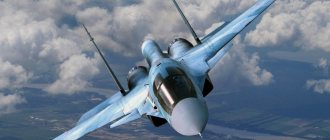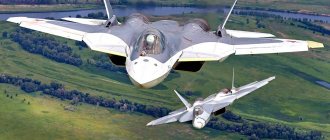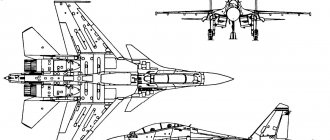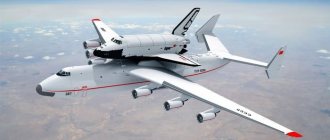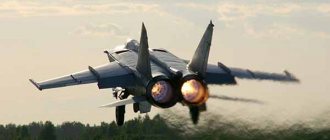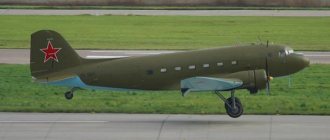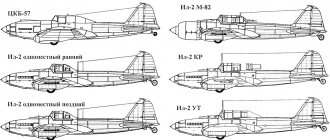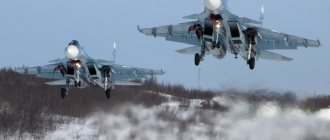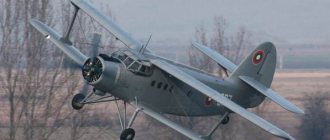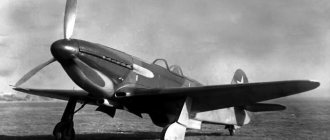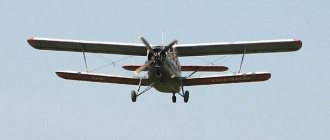The T-50 light tank was created as a successor to the T-26 combat vehicles, which could not withstand anti-tank artillery fire. The new tank received a hull with inclined armor plates, a diesel engine and torsion bar suspension.
But, even despite the high assessments given by the Red Army command based on the results of combat use, large-scale production of T-50 tanks never began. Therefore, at the beginning of the Great Patriotic War, the Red Army used outdated T-26 vehicles and T-70 light tanks, which were inferior to the T-50 in all respects.
It was created taking into account the experience of combat use of the T-26 tank in the Finnish war and the results of tests in the USSR of the German Pz tank. III, from which a number of design solutions were borrowed (three-man turret, commander's cupola, etc.).
The tank was put into service in February 1941. Produced at plant No. 174 named after K. E. Voroshilov. From July 1941 to February 1942, 65 units were manufactured.
History of creation
In the early 30s of the last century, the T-26 light tank entered service with the Red Army, which was mass produced in several modifications. But already in the middle of the decade, technological and technological progress in tank building led to the gradual obsolescence of the vehicle, which by 1940 promised to become catastrophic. The first attempt to create a successor was the experimental T-111 tank, which was tested in the spring of 1938, but was not further developed.
The war with Finland once again emphasized the weak armor of the T-26, which led to proposals to increase the thickness of the sheets to 30-40 mm instead of 15 mm. At the same time, Plant No. 174 receives the task of developing a fundamentally new vehicle with projectile protection and an in-line diesel engine based on the V-2. By this time, there were developments from the designers of plant No. 185, who proposed the option of modernizing the T-26 with replacing the chassis.
After the merger of the design teams, the developments received the designations 126-2 and 126-1, respectively. The first version was produced, version 126-1, which was tested in 1940. The military rejected the vehicle, which was based on the old T-26 hull, which did not allow the installation of a powerful diesel engine with increased dimensions. At the same time, customers rejected the 126-2 project because they wanted to get a light vehicle that was as unified as possible with the then promising A-32 medium tank (which later became the T-34).
New developments led to the creation of 2 prototypes of the 126(SP), which differed in the thickness of their protection and armament.
But at that moment, the GBTU management received test results of German Pz.Kpfw.III tanks, which led to changes in the concept of using tank units. Now the Red Army needed high-speed vehicles that had protection from 37 mm anti-tank artillery fire. The ones that most met the requirements were the T-126(SP) and T-34, which had one common drawback - high cost.
Modified prototypes of light tanks were provided by the design bureaus of the Kirov Plant and enterprise No. 174. At the beginning of 1941, comparative tests were carried out, where the equipment showed similar results, but the military gave preference to the development of plant No. 174. Already in February 1941, i.e. Before the tests were completed, the vehicle was adopted by the Red Army under the designation T-50.
Official approval for serial production followed on April 12 of the same year, and production started at plant No. 174 using bypass technologies. It was planned to launch a full-fledged production no earlier than the 4th quarter, and reach the planned volumes next year. But the outbreak of war confused all plans; the plant was already partially destroyed by German air raids in July. In total, 50 vehicles were assembled in Leningrad before the evacuation. After the evacuation to the city of Chkalov, the plant produced another 25 vehicles from spare parts, plus restored a number of tanks destroyed in battle.
At the time of its appearance, the T-50 tank was a unique vehicle, since the armor provided protection from fire from guns with a caliber of up to 45 mm at distances of more than 600 m.
No foreign light tank provided such protection to the crew. But by the end of 1941, armor with a thickness of 37 mm ceased to meet the requirements. Specialists from Leningrad Plant No. 174 proposed installing additional screens made of 15 mm sheets on the frontal part of the hull and the sides of the turret.
A similar modification affected some of the built T-50 tanks; it was found only on vehicles of the North-Western and Leningrad fronts. Bolts were used for fixation; the fastening design was identical to that used on the T-26 and KV vehicles, which were modernized at plant No. 174.
The USSR Defense Committee made efforts to further expand the production of T-50 tanks at production facilities beyond the Urals. But problems with the production of power units and the growing shortage of T-34 tanks led in the summer of 1942 to a temporary suspension of work on the T-50. By this time, documentation had been prepared for a simplified body, which was planned to be welded using semi-automatic machines.
The new tower of cast construction was supposed to have a thickness of 50 mm. But these developments never went into series, although during the war unsuccessful attempts were made to revive the production of the T-50.
Su-57 fighter - video
The aircraft is being developed to replace the Su-27 fighter in the Russian Air Force. For export deliveries based on the Su-57, together with India, it is planned to create an export modification of the aircraft with the designation “FGFA” (Fifth Generation Fighter Aircraft).
The aircraft made its first flight on January 29, 2010. In 2013, small-scale production of aircraft of this type began for weapons testing. At the beginning of 2016, Yuri Borisov announced that serial deliveries of Su-57 fighters would begin in 2022.
The first flight of the Su-57 with the second stage engine (product 30) will take place in the fourth quarter of 2022.
Development
Work on the project began in 2002. In 2004, Russian President Vladimir Putin was shown a model of the aircraft, and in 2005, funding for development began. On January 30, 2015, the head of the UAC, Yuri Slyusar, announced that deliveries of the PAK FA were beginning in the interests of the Russian Ministry of Defense.
Flight tests
On January 29, 2010, the first flight prototype of the Su-57 took off for the first time, completing a flight lasting about 45 minutes. The car was piloted by Honored Test Pilot Hero of Russia Sergei Bogdan. On March 14, 2011, during flight testing, the Su-57 broke the sound barrier for the first time, by this time 40 test flights had been made, and a program of testing prototypes at supersonic speeds began. On July 24, 2012, tests began on the third flight model (T-50-3, b/n 53) with the N036 radar, with an active phased array radar installed on it. As of October 28, 2013, more than 450 flights have been made. On September 18, 2015, the final stage of testing began.
Export modification
The export modification of the PAK FA for delivery to India and possibly other countries was called FGFA (Fifth-Generation Fighter Aircraft). The United Aircraft Corporation (UAC) and the Indian company Hindustan Aeronautics Limited (HAL) have signed a contract for the joint development and production of a fifth-generation fighter. Under the terms of the agreement reached, the Indian company will develop the FGFA on-board computer, navigation system, cockpit information displays and self-defense system. The remaining work in the joint project will be undertaken by the Russian company. As part of the process of preparing a contract between the UAC and the HAL Corporation on the joint development of a fifth-generation fighter, in 2010, in Zhukovsky near Moscow at the Ramenskoye airfield, a demonstration of the Su-57 took place to representatives of the Ministry of Defense and the Indian Air Force, as well as the HAL Corporation. It is expected that HAL's share in the joint project will be at least 25%. The total cost of the project is estimated at 8-10 billion dollars. It is assumed that the Indian version of the fighter will subsequently be exported.
The Peruvian Air Force plans to purchase Russian fifth-generation Su-57 fighters. According to the calculations of the Peruvian military, three such fighters would be enough to deter a potential enemy. According to military analysts in Peru, “given the state of Peru’s defense capabilities, it is necessary to adopt the latest powerful deterrent weapons.”
Cost of Su-57
Vladimir Putin, after observing the progress of the aircraft’s tests, said that “30 billion rubles were spent at the first stage of creating the aircraft, and the same amount is required to complete the project.” He explained that then the modernization of the engine, weapons, and so on will begin. At the same time, according to Putin, the aircraft will be 2.5-3 times cheaper than foreign analogues. India planned (2012) to purchase Su-57 at a price of $100 million per aircraft.
Description of the design of the T-50 tank
The T-50 tank had the usual layout for Soviet vehicles - with a control compartment in the bow, a fighting compartment in the middle and a logistics compartment in the stern. The control department was occupied by the driver, whose workplace was slightly shifted from the center. Three more tankers occupied the fighting compartment. The loader and gunner are on both sides of the gun, and the commander is next to the rear wall. A commander's dome was installed above the commander's head, which provided a 180-degree view.
The commander's dome and functional division of duties were used for the first time in the history of Soviet tank building. The commander of the T-50 tank could conduct observation without being distracted by firing.
When assembling the hull of the T-50 tank, armor plates of 37, 30, 25, 15, 12 mm were used. The upper, zygomatic and frontal sheets were joined at large angles. According to the plan, this was supposed to guarantee protection from 37-40 mm BS fire. The driver's hatch is cut into the upper frontal plate, the cover of which is equipped with a monitoring device. There was also a spare observation “eye” - a viewing device in the form of an armored ball. Late production vehicles are equipped with an embrasure with an armored plug instead of the “eyes”. The escape hatch was located behind the driver's seat.
The armor plates of the MTO roof were secured with bolts; rectangular air intakes equipped with nets and blinds were cut into the roof itself. The release of hot air, as well as exhaust gases, occurred through cracks in the sides of the aft section located above the tracks. This design guaranteed fairly active cooling of the engine and transmission. In the middle of the roof above the engine of the T-50 tank there was a rectangular hatch. The front part of the MTO roof had hatches for access to the fuel tanks and radiator filler necks. In the middle of the stern sheet, there was a fairly large rectangular hatch for servicing the transmission. The hatch was covered with a lid.
To make the turret, rolled armor plates with a thickness of 37 mm (mask, sides and rear) and 15 mm (roof) were used. The side sheets stood at an angle of 20 (right and left) and 15 (stern) degrees. The frontal embrasure of the tower was covered with a semicircular armor mask. In the roof of the T-50 tank turret there were two entrance hatches that covered hinged covers, holes for a periscope sight, and an exhaust fan with an armored hood.
The stationary commander's cupola, which was manufactured by stamping, had eight viewing slots (seven on prototypes) with Triplex devices, covered with armored shields. A signal hatch was made in the roof of the turret. In the rear sheet, for dismantling the gun, a special hatch was cut, which was closed with a lid. Through the same hatch, ammunition was loaded and cartridges were thrown out. For self-defense shooting, both sides of the turret had embrasures, as well as observation devices. A similar embrasure was located in the rear hatch of the tower.
The T-50's armament consisted of a 45-mm TP model of 1934 and two coaxial 7.62-mm DT machine guns. To aim the weapon, a TOS telescopic sight and a PT-1 periscopic sight were used. The initial speed of a BS weighing 1.42 kg is 760 m/s, and a fragmentation weapon weighing 2.13 kg is 335 m/s. The direct fire distance is 3600 m, the longest is 4800 m. The gun is aimed using manual drives. The ammunition consisted of 150 rounds for the gun and 4032 rounds of ammunition (packed into 64 discs) for DT machine guns. There were stowages for 24 F-1 and 7.62-mm PP PPD grenades with a b/c of 750 rounds.
In the engine compartment along the axis there was a liquid-cooled V-4 diesel engine (300 hp). Starting a diesel engine using an inertia starter - from an electric motor or manually. In addition, there was a pneumatic starting system. The total capacity of two fuel tanks placed on the sides of the diesel engine was 350 liters. The highway range was 344 km. An inertial oil type air purifier was used to filter the air. On the left side of the engine there was a 30-liter oil tank, oil filters, a fuel filter, an air cleaner, and an oil-water radiator.
The transmission of the T-50 tank included a gearbox providing four forward and one reverse gears, a double-disc main dry friction clutch, two multi-disc final clutches and two double-row final drives. To turn the tank, side clutches were used. The suspension was torsion bar and consisted of six double road wheels with internal shock absorption, a idler wheel with a track tensioning mechanism, three support rollers and a rear drive wheel. The caterpillar of the T-50 tank is a small-link caterpillar of 73 tracks, cast, 360 mm wide. Fire-fighting equipment consisted of a hand-held tetrachlorine fire extinguisher.
Experimental T-50 tanks were equipped with a radio station KRSTB with an antenna on the turret. Serial vehicles did not have radio stations. TPU-3 for three subscribers was used as an internal intercom. For communication between the commander and the driver, it was possible to communicate using a light-signal device (colored light bulbs).
Technical characteristics of the T-50 tank
general information
- Type – light tank;
- Combat weight - 13.8 tons;
- The layout is classic;
- Crew – 4 people;
- Quantity released: 75 pieces.
Dimensions
- Case length – 5200 mm;
- Case width – 2470 mm;
- Height – 2165 mm;
- Ground clearance – 350 mm.
Booking
- Type of armor – cemented steel, high hardness;
- Body forehead (top) – 37/50° mm/deg;
- Body forehead (bottom) – 45/225° mm/deg;
- Hull side (top) – 37/40° mm/deg;
- Hull side (bottom) – 37/90° mm/deg;
- Hull rear (top) – 25/63° mm/deg;
- Hull rear (bottom) – 37/10° mm/deg;
- Bottom – 12-15 mm;
- Housing roof – 15 mm;
- Turret forehead – 37/65-85° mm/deg;
- Gun mantlet – 37 mm;
- Tower side – 37/20° mm/deg;
- Tower feed – 15/15° mm/deg.
Armament
- Caliber and brand of gun - 45 mm 20-K;
- Barrel length - 46 calibers;
- Gun ammunition - 150;
- Sights – TOS and PT-1;
- Machine guns – 2 × 7.62 mm DT.
Mobility
- Engine type – diesel;
- Engine power – 300 hp;
- Highway speed – 60 km/h;
- Speed over rough terrain – 40 km/h;
- Cruising range on the highway – 344 km;
- Cruising range over rough terrain – 280 km;
- Specific power – 21.7 hp/t;
- Suspension type – torsion bar;
- Specific ground pressure – 0.56, kg/cm²;
- Climbability – 40°;
- The wall to be overcome is 0.7 m;
- The ditch to be overcome is 2.2 m;
- Fordability - 1.1 m.
Performance characteristics of the Su-57
Su-57 crew
- 1 person
Dimensions of the Su-57
— Length: 19.7 m — Wing span: 14 m — Rear wing span: 10.8 m — Height: 4.8 m — Wing area: 82 m² — Chassis base: 6 m — Chassis track: 5 m
Su-57 weight
— Empty weight: 18500 kg — Normal takeoff weight with 100% fuel: 30610 kg — Maximum takeoff weight: 37000 kg — Fuel weight: 11100 kg
Su-57 engine
— Engine type: turbojet bypass with afterburner and controlled thrust vectoring — Engine model: “AL-41F1” (on the prototype and aircraft of the first batches, the “second stage” engine has the factory designation “Type 30”) — Maximum thrust: 2 × 8800 (about 10900 on Type 30) kgf - Thrust in afterburner: 2 × 15000 (about 18000 on Type 30) kgf - Engine weight: 1350 kg
Thrust-to-weight ratio of Su-57
— Thrust-to-weight ratio at normal take-off weight: with 100% fuel 0.98 (~1.17 with “Type 30”) kgf/kg — Thrust-to-weight ratio with maximum take-off weight: 0.85 (~1.01 with “Type 30”) kgf /kg
Speed of Su-57
— Maximum speed at altitude: 2600 km/h — Maximum cruising (non-afterburning) speed: M=2.1
Su-57 flight range
— Practical range at subsonic cruising speed: with 100% fuel 4300 km; with 2 PTB: 5500 km - Practical range at supersonic cruising (non-afterburning) speed: with 100% fuel 2000 km
Su-57 flight duration
- up to 5.8 hours
Service ceiling of the Su-57
— 20000 meters
Su-57 take-off/run length
— 350 m (100 m)
Maximum operational overload of the Su-57
+ 10—11 g
Armament of the Su-57
— Cannon: 30 mm built-in cannon 9А1-4071К (upgraded GSh-30-1, rate of fire and recoil energy preserved) — Combat load: 1310—10000 kg — For air combat, in weapons bays: 1620 kg (8 × RVV-SD + 2 × RVV-MD) - Against ground targets, in weapons bays: 4220 kg (8 × KAB-500 + 2 × RVV-MD) - Suspension points: internal 8 or 10; external 8 or 2.
The internal bomb bays will use the new short-range RVV-MD, medium-range RVV-SD (Izdeliye 180) and long-range RVV-BD (Izdeliye 180-BD) air-to-air guided missiles. The differences between the new missiles and their predecessors are their increased range, sensitivity, noise immunity and the ability to detect and lock on a target during autonomous flight, which allows for rapid launch from internal weapons bays. Also likely to be used are KS-172 air-to-air missiles on external hardpoints. In total, 14 types of weapons are being developed for the new fighter, including short-, medium-, long- and ultra-long-range air-to-air missiles, air-to-surface guided missiles for various purposes, as well as adjustable aerial bombs.
Flight tests of the modernized 9A1-4071K rapid-fire aircraft cannon, which allows the entire carrier’s ammunition to be used in any mode, took place in 2014 on a Su-27SM aircraft. On the fifth-generation Su-57 aircraft, development work to test this gun is planned in 2015 after testing is completed.
Modifications
Officially, the T-50 was produced in one serial modification, but it can be divided into two types:
- Basic T-50;
- Simplified model. It had 40 mm homogeneous armor, a cast turret, and some tanks of this type did not have a commander's cupola.
There is also information that during the war, the T-50 was equipped with armored screens right in the field.
No other combat vehicles were produced based on the T-50, but there were several projects:
- T-127, with a narrowed hull and thinner rolled armor, which reduced its weight;
- T-52 or T-50-2, with more powerful guns or even a 25 mm anti-aircraft automatic gun;
- SU-T-50 – self-propelled guns based on the T-50 with a 76 mm cannon.
All projects had to be closed due to the outbreak of war.
Advantages and disadvantages
You’ve got an idea of the characteristics of this tank and its weapons, but in order to bring maximum benefit on the battlefield, you need to have a clear understanding of the advantages and disadvantages of the T-50 World of Tanks
, remember them always. To make it easier for you, we will now break everything down. Pros: • Decent stealth; • Excellent driving performance; • High rate of fire and good DPM; • Good accuracy; • Not bad penetration by the standards of the fourth level; • Acceptable vertical aiming angles. Cons: • Increased level of fighting; • Low safety margin and poor visibility; • Weak armor; • Small one-time damage; • Poor stabilization; • Penetration is not enough for battles at levels 6-7.
Combat use of the T-50
Very little is known about the combat career of the T-50 - by the beginning of the war, the tank had just begun to arrive in units and not many units were manufactured (on Soviet scales, of course), most of which ended up in the Leningrad direction.
With the outbreak of the war, their production was curtailed. There was an attempt to re-establish production of the T-50 only in a more simplified form (beginning of 1942), however, after producing 69 vehicles, this idea was abandoned. This marked the end of the career of this wonderful and underrated tank in every sense.
A total of 245 T-50s were produced.

